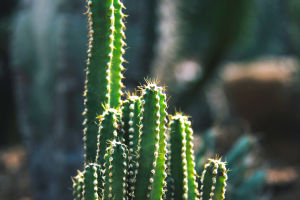Calla Lily
Born in Egypt, Calla lily is a persistent aquatic herb that has developed into an amphibious plant. The flowers are highly poisonous and can cause coma if eaten by mistake, but are highly ornamental.
Dwarf or small varieties of potted plants placed on windowsills and in front of mirrors are exotic and particularly vivid and lovely.
Calla lily's flower language
Different colours of calla lilies have different symbolic meanings
Calla lily: fraternity, holy piety, hope, eternity, nobility, pure, pure friendship, elegant temperament, springtime, pure and unadulterated love.
White calla lily: elegant and beautiful, its language is "fidelity, eternal love".
Red calla lily: symbolizes holy piety, eternal unity, good luck, purity, like.
Pink calla lily: symbolizes love for a lifetime.
Planting Tips:
Light and temperature: Calla lilies like warm, moist and slightly shaded environments, but the flowering period should be sunny, otherwise, the spathe with green, affects the quality.
You must ensure 3-5 hours of light per day, otherwise, the petiole will elongate and affect the ornamental value. Calla lilies are not very hardy and should be moved into a greenhouse in mid-October. In summer, it needs to be cooled and moisturized by frequent sprays of water under shade.
Watering and fertilizing: Calla lilies like moist, fertile soil, often referred to as "big fertilizer, big water", more watering during growth.
Fertilizer can be applied in rotation with liquid fertilizers such as well-rotted soybean cake water and chemical fertilizers (compound fertilizer or diammonium phosphate), once every 2 weeks. When applying liquid fertilizer, do not pour the fertilizer into the leaf sheath to avoid rot.
Previously, someone mentioned: "see buds stop fertilizer". After experiments and comparisons, the author believes that the amount of fertilizer should be increased after seeing buds, to ensure its long flowering period, large and showy flowers, and make the buds constantly, flowering all year round.
The use of ferrous sulfate: In potted calla lilies, the follow-up application of ferrous sulfate is an important part of the experiment.
Supplementary application of ferrous sulfate makes the leaves of Calla lilies larger, thicker, greener, smooth and shiny, and the petiole less likely to elongate, thus ensuring beautiful leaves.
It also promotes the formation of flower buds and prolongs the flowering period. This is done by diluting ferrous sulfate into a 2% solution and pouring it on every month, thoroughly each time.
Contraindications
Avoid low temperature and dryness. Calla lilies like warm and moist, not cold, winter indoor temperature generally should not be lower than 10 ℃, otherwise, affect the flowering.
During the flowering period, pay attention to keeping the potting soil moist, and often spray the foliage with warm water to keep it fresh and green.
Avoid smoke and dust pollution.
Calla lily cattle long flowering requirements of fresh air, more sensitive to smoke.
Stove soot and oil smoke can make calla lilies grow poorly, causing yellow leaves and falling flowers.
Avoid insufficient light. Calla lilies like light during growth and flowering; especially around the Spring Festival flowering season, if the light is not enough, it will lead to the flower buds not opening and falling.


